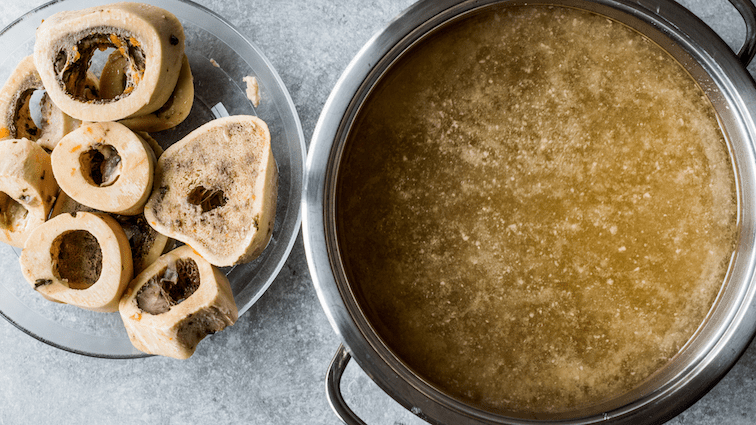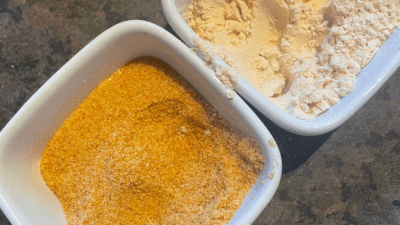In this article we discuss the rich history of bone broth, learn more about where bone broth came from.
Bone broth, a nutrient-dense and savoury liquid made by simmering bones and connective tissues, has become a modern culinary and wellness trend. Its history, however, stretches back thousands of years and is interwoven with diverse cultures, traditions, and even religious texts. To understand the significance of bone broth, we must journey through time, from ancient civilisations to its resurgence in contemporary kitchens.

Bone Broth in the Bible: The Book of Judges
The first recorded text of bone broth is actually in the bible dated approximately 1200BC. In the Bible, specifically the Book of Judges, we encounter a reference to bone broth. In Judges 6:19, Gideon prepares a young goat, unleavened bread, and broth as an offering to the angel of the Lord. This biblical reference underscores the long-standing tradition of using animal bones and meat to create nourishing and sacred offerings.
Traditional Chinese Medicine
In Traditional Chinese Medicine (TCM), bone broth known as “bone tea” or “stock,” has been made in family households for many years, and passed down through the generations acknowledged as must have addition to the Chinese diet.
European and Middle Eastern Traditions
Bone broth has also played a crucial role in European and Middle Eastern culinary traditions.
In medieval Europe, it was a staple in the diet of peasants and nobility alike. Known as “potage” or “stock,” it formed the base for numerous soups, stews, and sauces. The French, in particular, refined the art of making broths and stocks, with techniques that continue to influence modern culinary practices.
In the Middle East, bone broth is integral to dishes such as “khash,” a traditional Armenian soup made from boiled cow or sheep parts, including the head, feet, and stomach. This dish, often enjoyed during the winter months, is celebrated for its rich flavour and purported health benefits, particularly for joint health and recovery from illness.
Native American Traditions
Native American cultures have long utilised bone broth in their culinary practices. Tribes such as the Sioux and the Navajo simmered bones to create nutrient-dense broths, which were then used as the base for soups and stews. These broths provided essential nutrition, especially during harsh winters when other food sources were scarce. The marrow extracted from the bones was considered a delicacy and a vital source of energy.
The Modern Revival
The 21st century has seen a remarkable resurgence in the popularity of bone broth, largely driven by the health and wellness movement. Advocates tout its benefits for gut health, joint support, and overall immune function. The rise of paleo and keto diets, which emphasise whole, unprocessed foods, has further propelled bone broth into the spotlight.
Scientific Studies on Chicken Broth
Scientific studies have begun to explore the potential health benefits of chicken broth, a common type of bone broth. Research published in the journal “Chest” by Dr. Stephen Rennard and colleagues in 2000 investigated the effects of chicken soup on neutrophil migration, which is a marker of inflammation. The study found that chicken soup could inhibit neutrophil migration, suggesting an anti-inflammatory effect that could help alleviate symptoms of upper respiratory infections, such as the common cold .
Another study published in “The American Journal of Therapeutics” in 2008 examined the nutritional content of chicken broth. The researchers found that chicken broth is rich in essential amino acids, which play a crucial role in immune function and protein synthesis. The presence of compounds like carnosine, which has antioxidant properties, further supports the health benefits associated with consuming chicken broth.
Bone Broth in Modern Cuisine
Bone broth has also made its way into mainstream cuisine, featured in trendy restaurants and health food stores. It is often marketed

as a superfood, available in ready-to-drink formats, dehydrated, powders, and even broths infused with various flavours and herbs. Chefs and home cooks alike appreciate its versatility, using it as a base for soups, sauces, risottos, and more.
Conclusion
From its ancient biblical references to its revered status in Traditional Chinese Medicine and European culinary traditions, bone broth has stood the test of time. Its modern revival reflects a growing appreciation for traditional, nutrient-dense foods. As we continue to explore and celebrate diverse culinary heritages, bone broth remains a testament to the enduring wisdom of our ancestors and the timeless appeal of nourishing, homemade food.








